Whenever Porsche brings out a new powertrain, be it the first performance hybrid in the 918 Spyder, the all-electric dual motor system of the Taycan, or other innovations like variable-vane turbos in the 991 Turbo, we love to dig into the technical details and available data. In this aspect, the powertrain of the all new 2025 Type 992.2 911 GTS T-Hybrid is very much worth digging into.
Let’s not wasted words here and get right into it. Officially dubbed the “T-Hybrid Platform,” the 3.6L flat-six turbo engine for the 992.2 GTS is just one part of an entirely new powertrain.
Engine
Due to upcoming legislation in the EU that does away with fuel enrichment, a new way of doing a high performance engine was needed.
The 3.6L Hybrid uses an air-to-fuel ratio of 14.7:1, also known as Lambda=1, at all times, even at high loads and speeds. This ratio optimizes the burn and energy capture of each ignition cycle for fuel that is neither leaned or enriched. Porsche engines to date have always run into the enriched side of things when on full throttle or under high demand applications, but the new legislation required the engineers at Stuttgart to redo pretty much everything from the ground up.
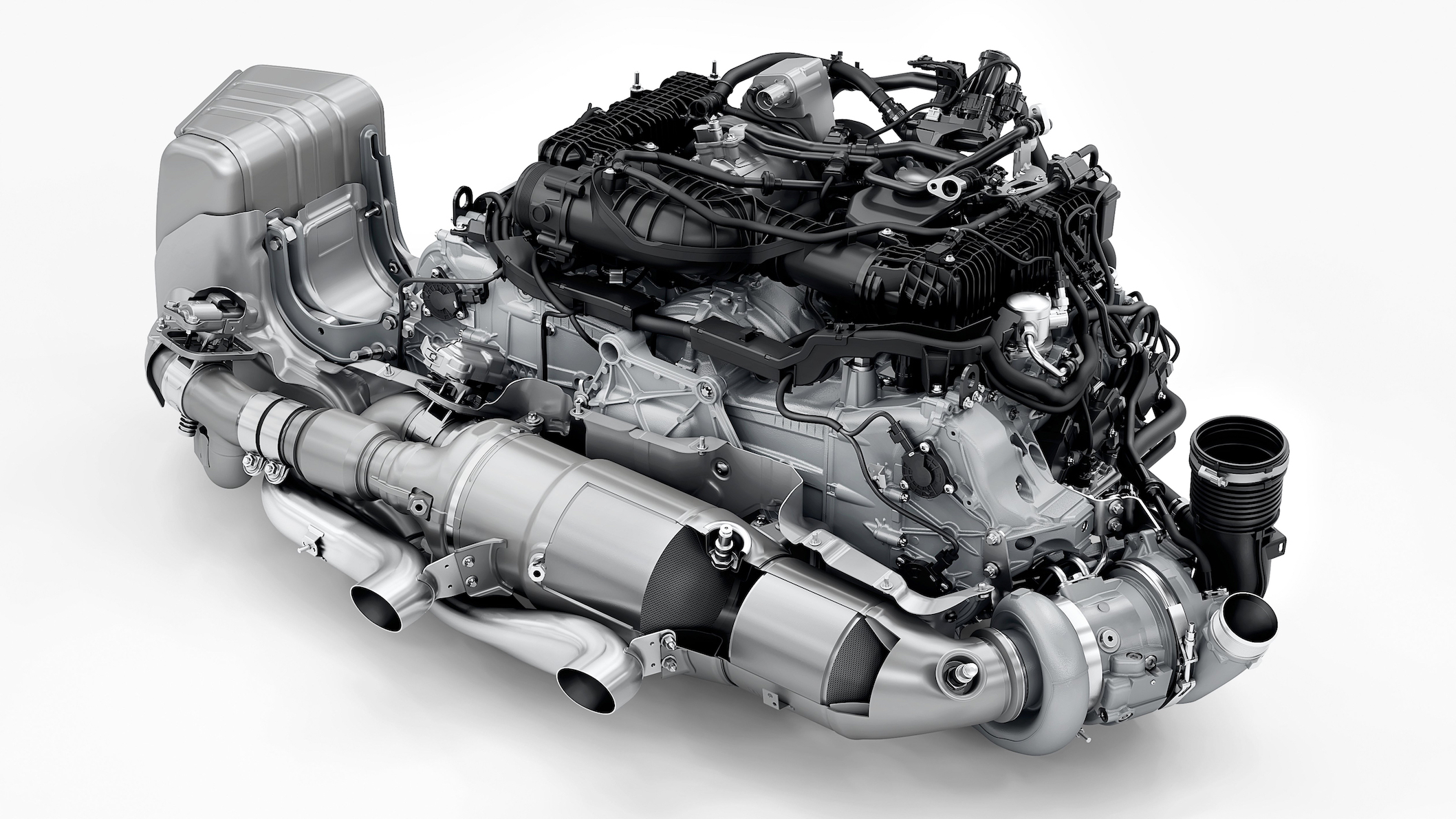
This new air-to-fuel ratio required the engine control system to be redone so that it was able to advance and retard spark at a per-ignition level to prevent knock. Since this means that each spark is individually timed, you won’t find a timing chain or a distributor cap on the engine. In fact, you won’t find a single pulley or belt on the engine, as the block and cylinder heads have also internalized many of the items that were formally bolted to the outside such as the water pump. It is, in effect, Porsche’s first fully digital internal combustion engine.
It uses an over-square bore and stroke at 97 x 81 mm to enhance breathing, and a 10.5:1 compression ratio to extract the most power per ignition, per cylinder. Direct central injection remains, but has been optimized to increase efficiency and has new injector heads that provide optimal dispersion within the cylinder.
Also gone from the exterior is the 12-volt starter, as the transaxle now incorporates an e-motor that also spins the engine during startup.
Single Turbocharger
The turbo attached to the 3.6L flat six is also all new, and a lot bigger than the two attached to the previous GTS. It also incorporates the idea of an MGU-H (Motor Generator Unit – Heat) from top tier motorsports and added an electric motor between the compressor and turbine of the turbo.

To eliminate turbo lag, when the driver inputs enough throttle, the motor in the turbo will drew up to 20 kW to spin the turbine up to 120,000 RPM and 26 PSI in less than or equal to 0.8 seconds, no matter where in the rev range the engine is. It is also a single, massive turbo compared to the previous GTS’s twin-variable-vane-turbo setup attached to that model’s 3.0L flat six. To put that electrically-assisted spool up time into context, in the previous GTS, the twin turbos took almost 3 seconds to spool from a standing start to full compression.
The electric motor in the turbo also, like an MGU-H, will instantly switch into generator mode once the turbo is spooled up and has enough exhaust gas to keep compression up. At full throttle, it can recuperate up to 11 kW of energy, recharging the battery or directing that energy to the transaxle’s e-motor. Converted to horsepower, the motor in the turbo can draw as much as 27 HP to spool the turbine up, but when it’s at speed, it can provide up to 11 HP equivalent back to the battery or to the e-motor.
Turbo cooling is fairly standard Porsche, with oil cooled bearings and a watercooled housing and motor. What isn’t standard is the inclusion of pumps that will keep circulating fluids until the turbo has reached a safe temperature, even if the engine is shut off. Basically, Porsche has a built in, sensor-driven turbo timer as standard.
Even more impressive, even with the turbo being much larger and including all of the new technology, it has a manifold weight of only 59.5 lbs, the same as both turbos combined from the previous GTS.
E-Motor Transaxle
Unlike Porsche’s other e-Hybrid models, the new GTS T-Hybrid uses an integrated e-motor in its 8-speed PDK transaxle (the T in T-Hybrid). A permanent-magnet assist electric motor is placed between the gearbox portion of the transmission and the flywheel of the 3.6L engine, and it is an entirely new design not related to any previous electric motor or e-Hybrid system.
In typical EV rotors, the magnets are placed in a V formation, with a spindle in the middle that is spun by the electromagnetic forces. In the T-Hybrid e-motor, they are placed around the outer edge, leaving the inner portion of the rotor almost completely hollow.

This allows for a continuous assist of 55 HP and 110 lbs-ft, with 65 HP available in 10 second “overboost” bursts. It also acts as a regenerative brake to an extent, however unlike the Taycan, the 992.2 GTS relies on disc brakes primarily instead of the e-motor. To provide this same output with a standard e-Hybrid system would have required a much heavier battery and motor setup, and with space at a premium in a 911, it is a much more elegant and more importantly lighter solution.
It is also much more efficient. Since the e-motor can draw from either the battery or the turbo (or both), it has an overall effect of reducing overall fuel consumption by 0.1 L/100KM, which is equivalent to about 1% better MPG. This is fairly astonishing since the powertrain of the new GTS is 18% more powerful and fully 20% larger than the one in the previous generation.
Battery
The new GTS uses a small, 1.9 kWh quick-charge battery that operates at 400V, and in size is about the same as the battery used in smaller family cars. It weights a fairly lightweight 37 lbs, and is mounted directly over the front axle for optimal weight distribution.
The battery is very robust and can handle high-draw surges such as powering the AC compressor, the Porsche Dynamic Chassis Control stabilizer, and the front end lift system, all at the same time. As the internal network is optimized for 400V operation, it also actuates all of those systems much faster than the already fast actuation in Porsches now.
A dedicated cooling circuit keeps the battery at or about 100 F, and is dedicated because the powertrain cooling circuit runs at or about 200 F, and are completely electrically driven. There are no belt-driven accessories at all in the new GTS, completely operated by the internal 400V network.

It is also not a PHEV battery, so there is no plug-in functionality. It uses independent cylindrical cells measuring roughly 19 x 64 mm stacked into layers, with these batteries designed to operate more as capacitors. In that sense, they charge extremely quickly, and can release their stored energy just as fast. The period of highest discharge is when the e-motor is used to start the engine.
For low-voltage equipment such as the infotainment system, headlights, dash, and the like, a lightweight 12V lithium-iron-phosphate battery is mounted in the engine compartment. This battery is also what “wakes up” the car when you remotely unlock the car or open a door, quickly bringing the dash and infotainment up and booting the hybrid control computer so that it can start the engine when you push the starter button.
All Together
By keeping the powertrain circuit entirely self-contained, the system is astonishingly lightweight for what it is. As well, as space is a premium in a 911’s engine bay, the engineers had to play a game of powertrain Tetris to make everything squeeze in without overall changing the expected handling characteristics of an upper tier 911.
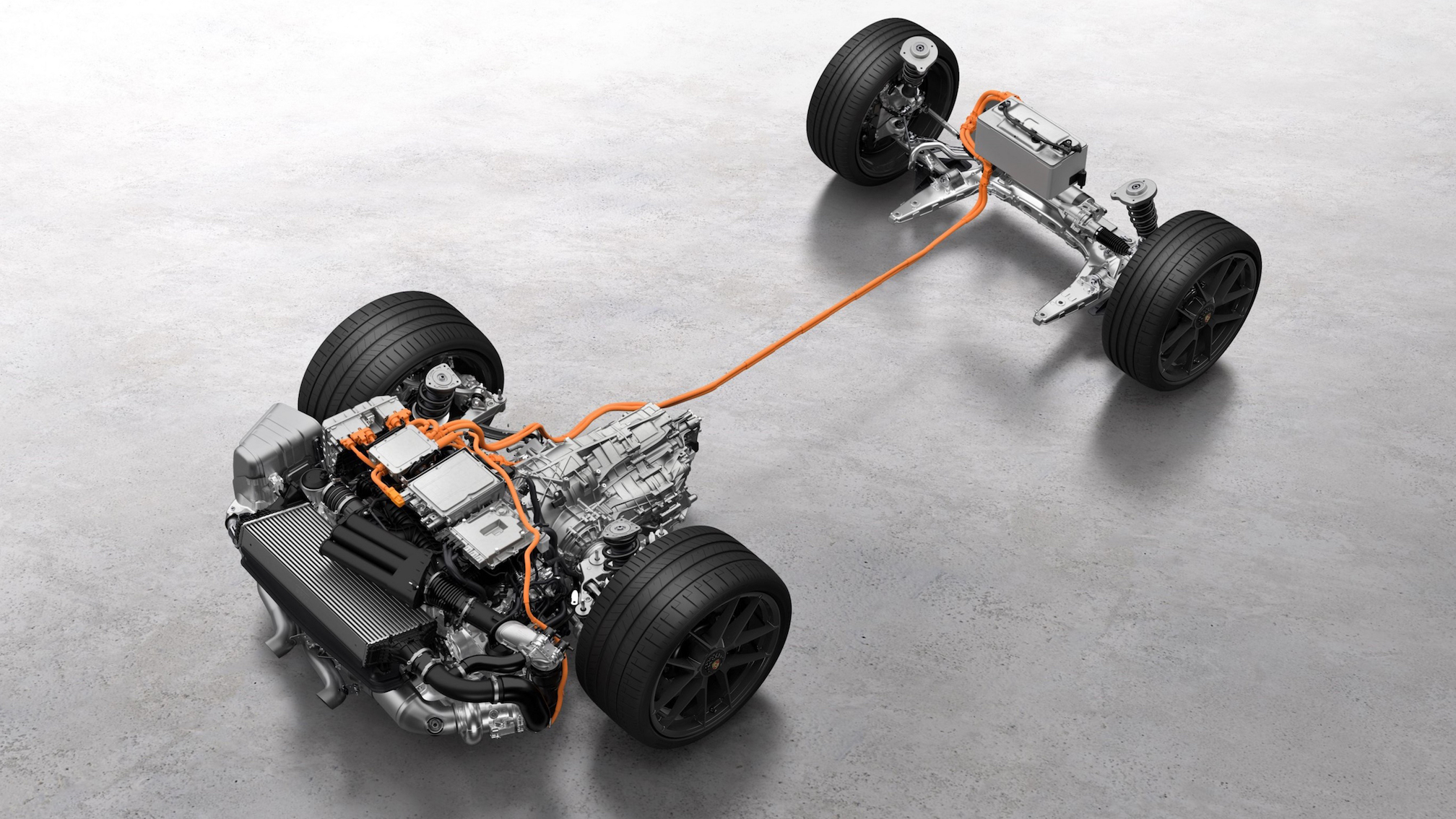
Still, it required the fully assembled and dressed engine to be dropped by a significant 4.3 inches, the vast majority of that made to fit the hybrid system’s electronics and cabling. The massive turbo is mounted on the passenger side of the engine, and the space freed up behind the engine is where the all-new exhaust system with its updated catalytic converters and particulate filters are fitted.
The muffler and resonator are now fitted to the driver’s side of the engine, now that there is no second turbo in the way. The drop also allows for the single large intercooler to be mounted above the exhaust and part of the engine, under the engine bay’s intake grille.
It should be noted that because of how the hybrid system is fully integrated into the transaxle and turbo, there is no clutch between the hybrid and the gearing, meaning that the GTS does not have an electric only mode.
Put together, you get a combined system output (engine + hybrid) of 532 HP and 449 lbs-ft. When the e-motor is overboosted, that power jumps to 542 HP and 453 lbs-ft. This much power is very impressive, especially once you consider that the GTS weighs a scant 50 kg (110 lbs) over the previous GTS, coming in at a full curb weight of a hair under 1,600 kg (3,527 lbs).


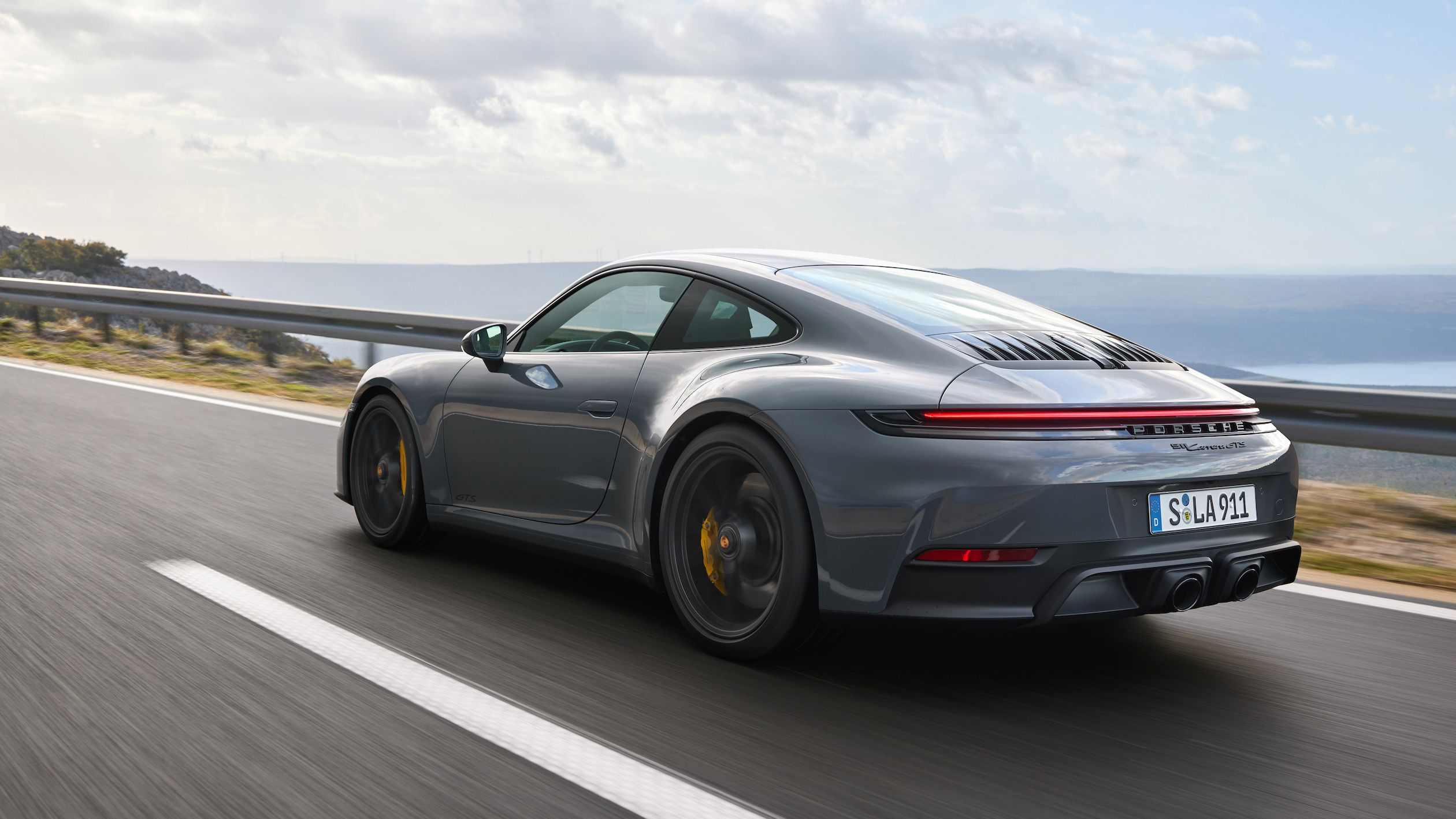



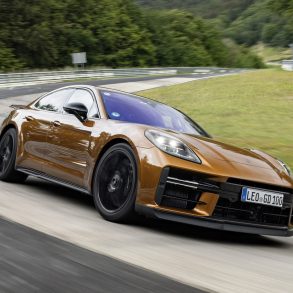


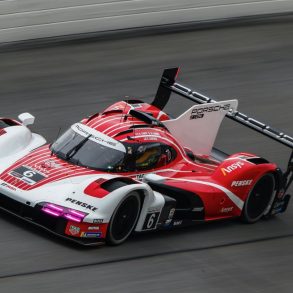


Funny how their cars are turning into BMWs, lol. What’s the point of buying a Porsche if it’s not Naturally Aspirated? Plus their dimensions have grown out of proportion now, rather turning into luxury sedans with 2 doors. I still don’t see the Hydraulic steering as they continue to use the way cheaper Electric steering with no feedback at all and touchscreens because all this is 40% cheaper to build as compared to using analog buttons and controls, yet the prices are at an all time high and dummies with money will happily come and buy them. Dealer markup is another illegal and unethical practice Porsche dealers are resorting to and Porsche doesn’t do anything despite knowing all about it. I really see no value in newer cars from any angle. No matter how hard I try, I fail to understand how newer is better. All I see is compromises by VW rebadged as Porsche.
0